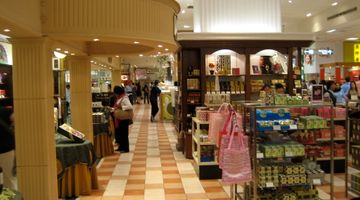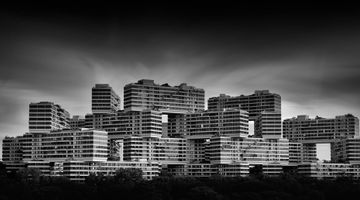Weather in Singapore
Much like most destinations in Southeast Asia, Singapore is characterised by the standard tropical climate: hot and humid. Fortunately for travellers and locals alike, the island nation experiences this warm climate year-round with fairly constant daily temperatures of around 27 degrees Celsius. This is great news for hopeful travellers who are trying desperately to plan and coordinate their travel plans and dates, as it means that the best time to pay Singapore a visit is pretty much anytime.
Kudos for you if your leave dates happen to fall between July and August as this is Singapore’s slowest time for tourism and flight tickets are cheaper during these months.
Rainfalls & humidity
Keep in mind, however that despite the moderate and warm climate, rainfall in the City of the Lion is an almost daily occurrence, even during the non-monsoon period. Travellers would do well to pack a lightweight, foldable umbrella for their trip to Singapore as well as sunscreen and a peak-cap.
Thankfully, the tropical showers are mostly brief in duration, not widespread across the whole island, and can be a refreshing hiatus from the heat of the sun. Relative humidity across the island is pretty high and in the range of 70% - 80%. The warmest month is April, the coolest month is January and the wettest month is November.
Monsoon seasons
Visitors would do well to plan their trip around the two main monsoon seasons in Singapore; with the Northeast Monsoon Season occurring from December to March, and the Southwest Monsoon Season occurring from June to September.
Northeast monsoon (December, January, February, March)
Fortunately, the Northeast Monsoon has a ‘wet phase’ as well as a pleasant ‘dry phase’. The ‘wet phase’ lasts from December to January where there is a continuous moderate to heavy rainfall in the afternoons and evenings and probably not all that ideal for travelling.
Visiting museums, art galleries and indoor theme parks would be pleasurable activities to engage in during this time and fortunately for travellers, Singapore boasts these cultural attractions in wonderful abundance.
However, the ‘dry phase’ from February to March is a fine time to explore Singapore with little to no rain and cool temperatures during these months.
Southwest monsoon (June, July, August, September)
The Southwest Monsoon is a somewhat different experience. Thunderstorm activity and rain showers occur before dawn until around midday, but fortunately the thunderstorms only last around half an hour.
During these months, ‘Sumatra squalls’ are a common phenomenon. ‘Sumatra squalls’ are a line of thunderstorms that develop over Sumatra at nighttime, shift to the west coast peninsula of Malaysia and usually reach Singapore around early morning. This results in heavy rain that falls for a couple of hours and is trailed by cloudy, overcast skies and light afternoon rain showers. This season however, also experiences sporadic spells of dry weather and visitors here during these months would still be able to have a pleasant trip.
Inter-monsoon period (April, Mai & October, November)
Breaking up the Northeast Monsoon season and the Southwest Monsoon season is the inter-monsoon period. This period occurs from April to May, and October to November. During this time Singapore experiences afternoon and early evening rain showers of a moderate nature and temperatures are warm and comfortable.
May to July are typically the hotter and drier months, whereas November to January is typified by more frequent spells of rain.
Haze (August, September, October)
Another weather condition that travellers should be mindful of is, the Southeast Asian haze which typically occurs from August to October. This is when Singapore is engulfed in a smoky haze of air pollution as a result of the agricultural burning and forest fires in Indonesia. This pollution is carried to Singapore by south-easterly or south-westerly winds and is best avoided for health reasons.


























